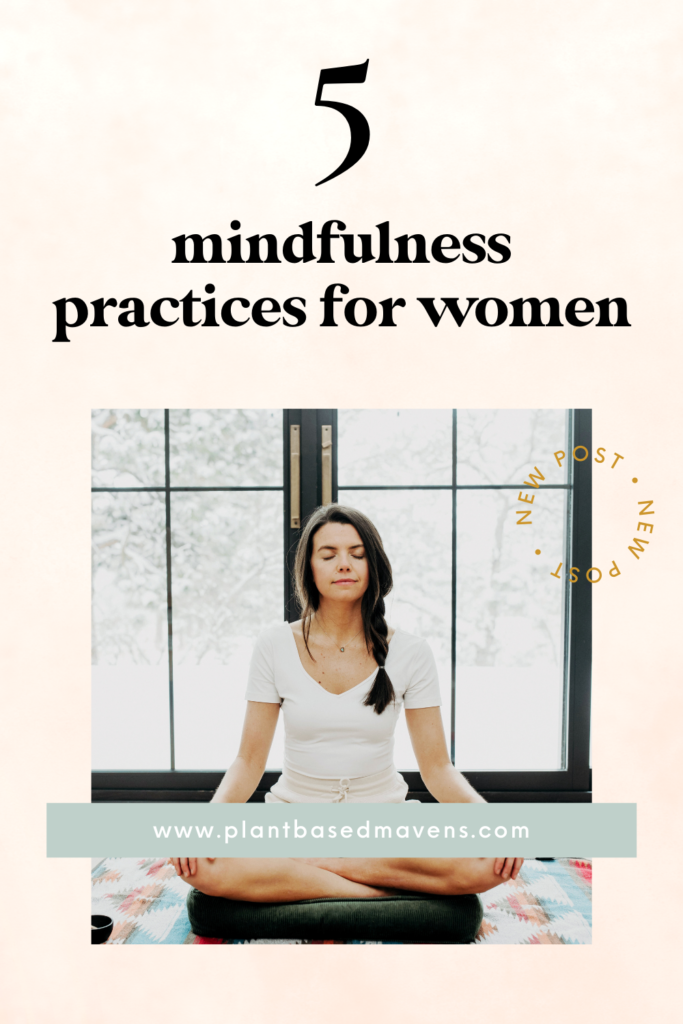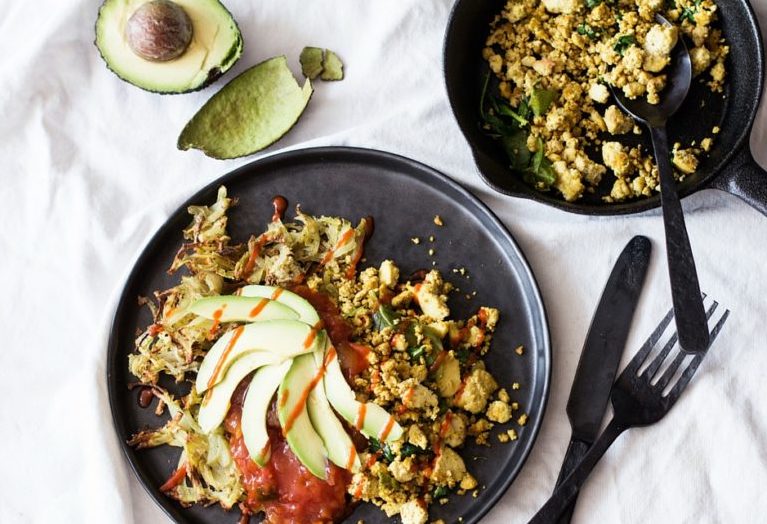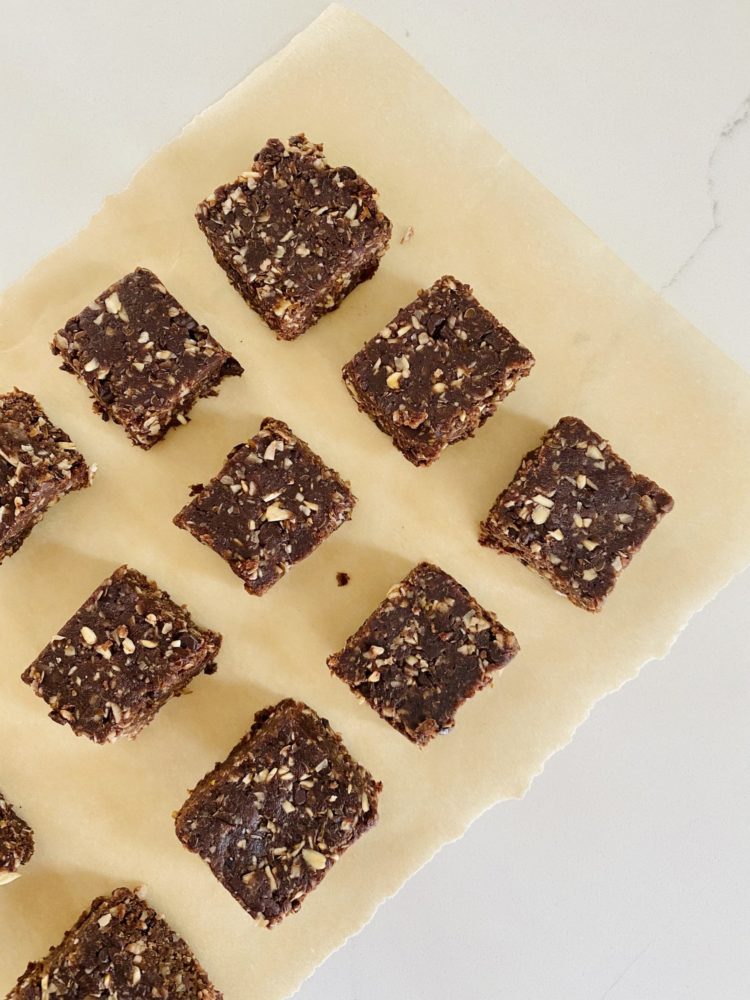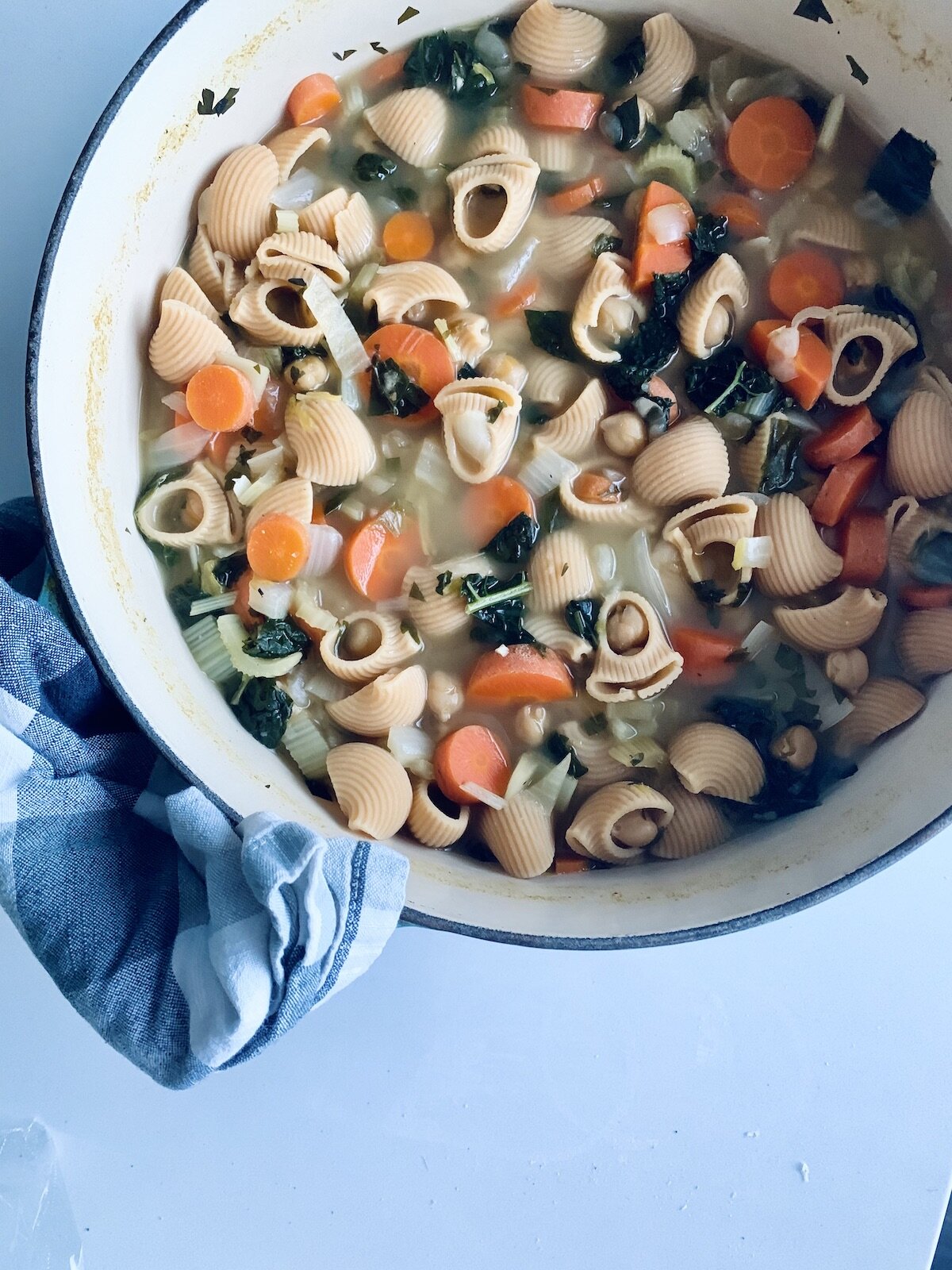Mindfulness is the golden ticket to almost everything you want in your life. When it comes to your health, your relationship with food, and your relationship with your body, mindfulness is what will help you see what’s standing in your way and get you unstuck. The term “mindfulness” can feel very nebulous, so let’s define it, look at how mindfulness is not the same as meditation, and walk through five practical (and enjoyable!) ways you can start practicing it everyday.

Why should you practice mindfulness?
Mindfulness is your golden ticket. Without it, it’ll be very difficult for you to step out of the Diet Cycle and approach your health and well-being from a grounded place. Practicing mindfulness has the power to remodel your brain. You grow about 700 new neurons every day, which means your brain is constantly adapting itself based on your thoughts, beliefs, and experiences. Mindfulness helps shift your thoughts and beliefs (and therefore how you experience your life), and then those qualities restructure your brain. Mindfulness has been shown to reduce anxiety and inflammation in the body (the root of most disease), and increase memory, happiness, resilience, self-esteem, and energy.
My favorite benefit of mindfulness is its ability to help you learn to respond instead of react to situations in life. I envision reacting as your life swirling wildly around you like a tornado with you at the center. I envision responding as being able to take a gigantic step backwards to give yourself more space, time, and perspective to process a situation in your life. The world slows down, and you can see things more clearly. This super power is key to living an intentional, happy life.
The ultimate goal of mindfulness is to create space between a situation and your response to the situation (either internal or external response via emotions, thoughts, words, or actions), and this is accomplished by getting curious and intentional about why you do/think/feel/say the things you do.
Mindfulness vs. Meditation
Mindfulness is not the same thing as meditation. Meditation is a specific practice that you engage in for a defined period of time. Mindfulness is a way of being. Meditation can be part of your mindfulness practice, but mindfulness is something you bring to every minute of your life.
5 Mindfulness Practices For Women
1. Journaling
Reflective practices like journaling are a great place to start to notice patterns in your emotions, thoughts, and actions. This is the first step to taking that gigantic step backward and creating space in your mind. As you start to journal regularly and these patterns emerge, you won’t be able to unsee them. With this new perspective, you can then start to rewrite the outdated scripts that dictate your life. Everyone will have a unique way of going about journaling, so I encourage you to experiment. For my journaling practice, I usually write a question at the top of the page (ex: why did today feel hard?) and then make a bulleted list (ex: didn’t sleep well, judging myself for what I said in the meeting, repetitive thoughts about conversation with my friend yesterday). Some people like stream of consciousness style journaling. If writing isn’t how you best process your days, try voice journaling by recording a voice memo on your phone. Speaking your thoughts and feeling aloud can be extremely powerful.
Practice: Commit to a journaling method for 5 minutes in the morning or evening.
2. Self-gratitude
Mindfulness requires befriending yourself. A pillar of mindfulness is non-judgement, or the ability to witness your thoughts, feelings, and actions just as they are without judging or assigning meaning to them. Most of us say things to ourselves that we would never say to a friend. This practice is about learning to treat yourself like you would your best friend – with compassion, love, and care. You can practice self-gratitude in a few different ways. Along with your journaling practice, try listing 2-3 things about yourself that you are grateful for. Another excellent practice is to counter every negative thought you have with a gratitude for yourself. If you find self-gratitude difficult, you are not alone. Try asking the Friend Question: “what would I say to (fill in the name of a close friend) if they were in this situation?” This will help you come up with a compassionate response.
Practice: Use the Friend Question every time you have a negative thought about yourself.
3. Deep breathing
To practice mindfulness as a way of life, you need to learn to be present in your body and to return to your body when you feel like you’re mentally or emotionally reeling out of control. I find that we as women have an especially difficult time being in our bodies because they are so often the focus of our stress and anxiety. Breathwork is a great practice to help you return to your physical self. This can be as simple as a few long, slow, deep breaths before, during, or after a heightened moment. Or it can be a more structured practice like four-part breathing where you inhale for a count of four, hold for a count of four, exhale for a count of four, and hold at the bottom for a count of four, and repeat for a few rounds. Not only does deep breathing bring you into your body, it also shifts you into your parasympathetic nervous system which promotes relaxation.
Practice: Just before the most stressful point in your day, place one hand on your heart and one on your belly and take five slow, deep breaths. Notice how your energy has shifted after the deep breathing, and notice how you then show up in the stressful situation.
4. Releasing
Letting go is another key pillar of mindfulness. Learning to release what isn’t serving you clears space in your mind and heart for new, wonderful things to grow. Nothing keeps you in reaction mode like a chaotic mind, full schedule, and old, stagnant energy! Everyday, I choose one thing to release. It might be something big like an ancient story about my self-worth, or it might be something small like releasing the expectation to cook dinner and getting takeout instead. Taking time to regularly reflect on your life and clear out what isn’t serving you will feel like a big, satisfying exhale. Ahhh…
Practice: During your journaling practice, note one thing you are going to release that day. Close your eyes and visualize yourself sending it off into the open sky, fading out of your life.
5. A daily rest ritual
Every woman I know needs this mindfulness practice. Most of us tend to live in a state of either ruminating on the past or fantasizing about the future. Rest is part of learning to slow down and be in the present. A daily rest ritual is a small, daily gift you can give yourself to practice being present. I want it to feel nourishing and luxurious, time that you deeply look forward to – not forced or rigid. You get to decide the time, place, activity, and length that is best for you. My daily rest ritual happens in the late afternoon, just before I start preparing dinner. I make a cup of tea, sit in my favorite chair, and watch the afternoon sun stream into the living room. Sometimes it only lasts a few minutes, but it is a luxurious few minutes. For you, perhaps it’s the precious few moments at dawn before the rest of the house is awake, or during your morning shower or evening bath, or your post-yoga savasana. Whenever it is, be intentional about being present during this time. Focusing on physical sensations is a helpful way to anchor yourself into the present – the warm sun on your face, the smell of your soap, the taste of your coffee. It’s also helpful to tie this daily ritual to an activity you already do (a shower, drinking coffee, etc.) so it’s easier to implement.
Practice: Designate a few moments of every day (same time, same place, same activity) to luxuriate in the present moment.


